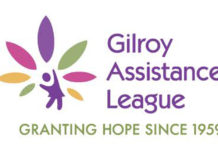The Santa Clara County Board of Supervisors declared a local
emergency in response to the pandemic H1N1 virus, or swine flu.
The Santa Clara County Board of Supervisors declared a local emergency in response to the pandemic H1N1 virus, or swine flu.
The board’s declaration Tuesday followed a report from county staff that showed 155 hospitalized cases of the virus which has resulted in eight deaths in Santa Clara County between April 3 and Sept. 15. The board’s decision includes spending $500,000 of public funds for flu emergency response efforts.
Cases of swine flu have increased dramatically in the United States since the virus was first discovered in humans in April. Throughout California, more than 2,000 cases of H1N1 have been reported, including 167 reported deaths, according to the report presented by County Executive Jeff Smith and county Health Officer Marty Fenstersheib.
“We continue to take proactive measures to prepare and respond in the face of this increasing health threat by declaring a local emergency in response to the threat of H1N1” said Supervisor Liz Kniss, President of the County of Santa Clara Board of Supervisors. “Decisive action is called for with the expected increase of flu transmission in Fall and Winter.”
Studies reported by the Centers for Disease Control and Prevention (CDC) predict that H1N1 transmission is likely to persist and increase in the Northern Hemisphere during fall and winter.
Government Code Section 8630 authorizes the Board of Supervisors to proclaim a local emergency when county residents are threatened or likely to be threatened by conditions of disaster or extreme peril to public safety, that are likely to be beyond the control of public services, personnel, equipment and facilities. The county previously declared a local emergency following the identification of cases of the pandemic flu virus in Santa Clara County earlier this year. The board of supervisors declared a local emergency on May 5, 2009, and later terminated it on May 19, 2009.
“We have closely monitored the local and national status of H1N1, and believe it is imperative that we take the necessary steps to protect our community. The Board’s declaration of emergency will enable us to put needed resources in place to respond to what is likely to be a flu season that will impact our entire community,” said County Executive Jeff Smith.
Local surveillance indicates that the H1N1 virus continues to spread through the community and has begun to increase in the last few weeks.
In Gilroy, a sixth grade student at Ascencion Solorsano Middle School was hospitalized earlier this month with severe swine flu-like symptoms, and she’s just one of many school children and community members who may have contracted the flu. Although the Solorsano student’s case was not confirmed as swine flu, she tested positive for Influenza A and the district is “going on the assumption that it’s H1N1,” said District Head Nurse Eileen Bontempi.
The same week that case was reported, 88 students were out sick at the school, compared to 22 during the same time last year, Solorsano Principal Sal Tomasello said.
So far, no confirmed cases of swine flu have been reported in Morgan Hill, San Martin or Gilroy.
The County Public Health Department is preparing for the distribution of the pandemic H1N1 vaccine, as well as antivirals medications, to try to limit the spread of the virus.
“Because the pandemic H1N1 virus is a new flu strain, people have little or no immunity and it has spread world-wide,” Fentersheib said. “Everyone should practice basic preventative measures to help limit the spread of the flu including hand washing, and staying home when sick, and get your seasonal flu vaccine now.”
Santa Clara County Public Health Department recommendations:
By preparing now, you can help protect yourself and your family later. Don’t forget food, water and medicines that you would want on hand for any emergency. For a helpful list, you can go to www.sccphd.org and look for the Home Care Guide. There you will find the information you need to prepare at home.
Because so many people may become sick with this new flu virus, each individual and family should prepare and have the supplies they may need.
The following common-sense actions can help to limit the spread of germs and the pandemic H1N1 virus:
– Wash your hands frequently.
– Stay away from sick people as much as possible.
– If you are sick, stay home. Cover your coughs and wash your hands. And stay away from others as much as possible.
Visit the Public Health Department’s web site at www.sccphd.org and the CDC at www.pandemicflu.gov for the latest. On the Public Health Department site residents can now subscribe to the e-newsletter which will send new information about H1N1 and other Public Health Department activities as it becomes available.















